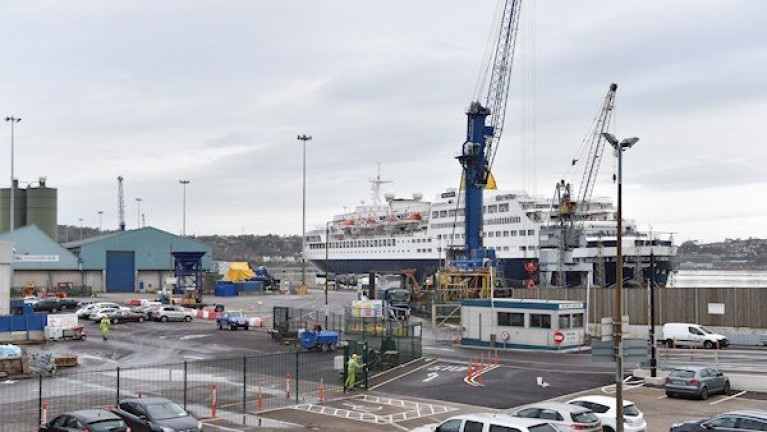Displaying items by tag: Tourists Disemback
Cruise Ship Had Clean Bill of Health Insists Port of Cork Before Hundreds of Tourists Disembarked
It has been insisted by port authorities that the first large cruise ship of the season which brought hundreds of tourists to Cork Harbour and city today (yesterday) had a clean bill of health.
As the Irish Examiner reports, the Port of Cork said all relevant checks were conducted before the MV Saga Sapphire berthed last night in Ringaskiddy Ferry Terminal, on route from Dublin Port where the vessel had been for two days (as Afloat previously highlighted).
Its passengers boarded coaches this morning for a range of short excursions around the region, including to Blarney Castle.
Concerns had been expressed in Cobh, where cruise ships normally berth, and in Ringaskiddy, about the ship's arrival.
However, the port authorities said cruise ship tourism offers no higher risks compared to tourists visiting via airports or public transport.
The spokesperson said however that port authorities are constantly monitoring what is a quickly evolving situation both at a national level, and globally as cruise ship operators make their own decisions in relation to their operations.
The Port said the Ringaskiddy Ferry Terminal has been fully sanitised and is equipped to handle a vessel the size of the Saga Sapphire.
For more on the newspaper's story click here.
In addition Afloat adds the day before the cruise ship berthed at Ringaskiddy, the Port of Cork issued a statement concerning the cruise season 2020 and Covid-19 precautionary measures. The statement from the Port of Cork can be read here.
Afloat also adds another notable Covid related travel update also announced on Thursday is that the 'over-50's UK based cruise operator is to make changes to cruise travel following advice from the UK Government for those over 70 and for those with an underlying medical condition.
The advise has led to temporarily suspending Saga's Ocean cruises from 15 March 2020 to 1 May 2020 on board Saga Sapphire and Spirit of Discovery (See newbuild maiden cruise to Dublin Port) and also during last summer's inaugural cruise with a first visit to Cobh.























